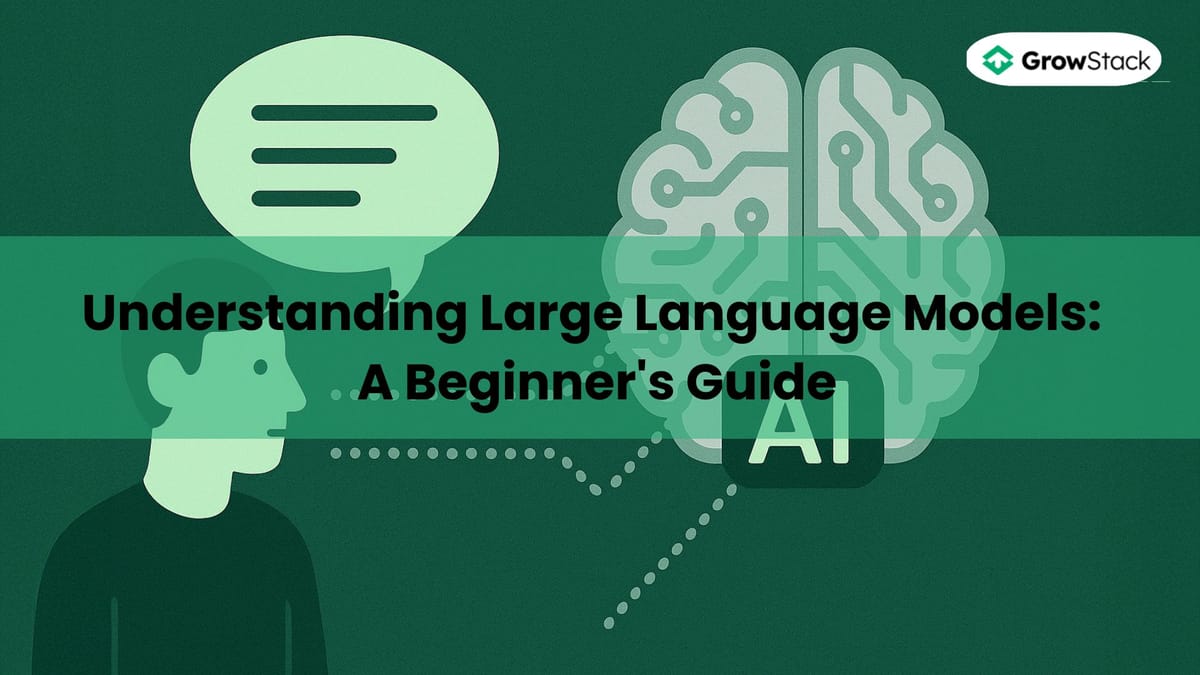Understanding Large Language Models: A Beginner's Guide

Artificial Intelligence (AI) has been making waves across industries, and at the forefront of this revolution are Large Language Models (LLMs). These models, such as OpenAI’s GPT and Google’s BERT, are transforming how humans interact with machines, enabling advancements in customer support, content creation, education, and much more. If you've ever wondered how these models work and why they matter, you're in the right place. In this blog, we’ll break down LLMs in a way that’s easy to understand and relatable, even if you’re just getting started with AI.
What Are Large Language Models?
At their core, Large Language Models are advanced algorithms designed to understand and generate human-like text. Think of them as machines that learn language patterns by training on vast amounts of text data, including books, articles, websites, and more. By doing so, they can perform tasks like answering questions, writing essays, translating languages, and even generating code.
To put it simply, these models predict the next word in a sentence based on the context of the words that come before it. For instance, if you ask, “What is the capital of France?” an LLM would generate “Paris” by recognizing patterns from its training data.
How Do They Work?
LLMs leverage deep learning, a subset of AI that mimics the way the human brain processes information. Specifically, they use neural networks, which are computational frameworks inspired by the structure of the human brain. Here’s a step-by-step breakdown:
- Data Collection: LLMs are trained on enormous datasets that include text from books, news articles, blogs, and more.
- Preprocessing: This data is cleaned and structured to ensure it’s usable for training.
- Training: Using advanced architectures like Transformers, the model learns relationships between words and phrases. Transformers introduced a mechanism called “attention,” allowing the model to focus on specific words in a sentence to understand context better.
- Fine-tuning: After initial training, LLMs can be fine-tuned for specific tasks, such as medical diagnosis, sentiment analysis, or conversational AI.
If you’re interested in diving deeper into how Transformers work, this article from Hugging Face is an excellent resource.
Why Are LLMs Important?
- Natural Language Understanding: LLMs can grasp the context of complex queries, making them indispensable in applications like chatbots, virtual assistants, and search engines.
- Content Generation: Tools like ChatGPT have revolutionized content creation, enabling users to draft blogs, emails, and even marketing campaigns in seconds.
- Multilingual Capabilities: These models can translate and process multiple languages, bridging communication gaps across the globe.
- Accessibility: LLMs have made AI more approachable. Platforms like Growstack.ai empower businesses and individuals to harness AI’s potential without needing extensive technical expertise.
Real-Life Applications of LLMs
- Customer Support: Chatbots powered by LLMs provide instant, accurate responses, reducing wait times and improving user satisfaction.
- Education: Personalized tutoring apps use LLMs to deliver custom learning experiences.
- Healthcare: AI assistants help doctors analyze patient records and even predict potential health risks.
- E-commerce: Product recommendations and search functionalities are enhanced by understanding customer queries better.
If you’re curious about how businesses are leveraging LLMs, check out Growstack.ai, a platform that simplifies AI integration for startups and enterprises.
Challenges and Ethical Considerations
Despite their impressive capabilities, LLMs are not without limitations:
- Bias in Data: Since these models learn from existing data, they can inadvertently inherit biases present in the text they’ve been trained on.
- Energy Consumption: Training LLMs requires significant computational power, raising concerns about environmental impact.
- Misinformation: Without careful monitoring, LLMs may generate incorrect or misleading information.
It’s essential for developers and businesses to address these challenges to ensure ethical AI deployment. For instance, platforms like Growstack.ai emphasize ethical AI practices while helping organizations implement AI solutions.
The Future of LLMs
The evolution of LLMs is far from over. With advancements in computing power and research, we can expect these models to:
- Become more energy-efficient.
- Provide even deeper insights across industries.
- Enhance human creativity by acting as collaborative tools rather than replacements.
For beginners eager to explore LLMs further, the journey can begin with hands-on tools and resources available online. Platforms like Hugging Face, OpenAI, and Growstack.ai are excellent starting points to understand how AI can drive innovation in your projects.
Large Language Models are reshaping the way we think about technology and communication. Whether you’re a tech enthusiast or a business owner, understanding these models is key to unlocking their potential. As we embrace the AI revolution, staying informed and adopting ethical practices will be crucial.
Ready to explore how LLMs can transform your workflow? Head over to Growstack.ai to discover AI solutions tailored for you.